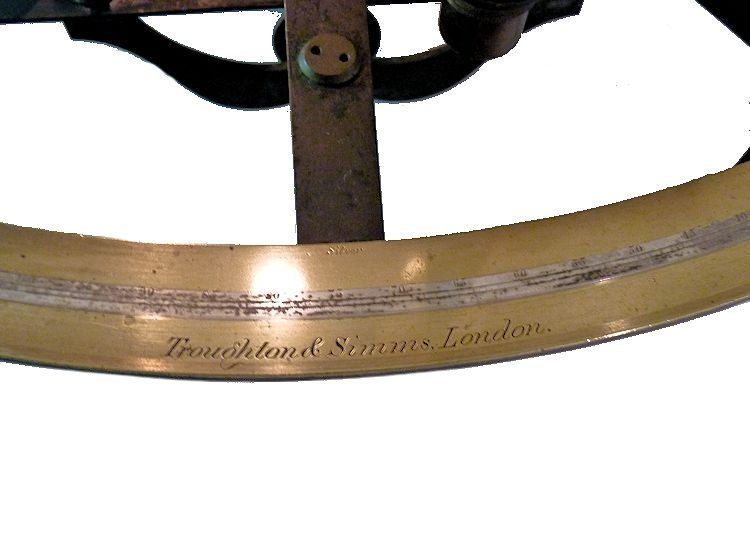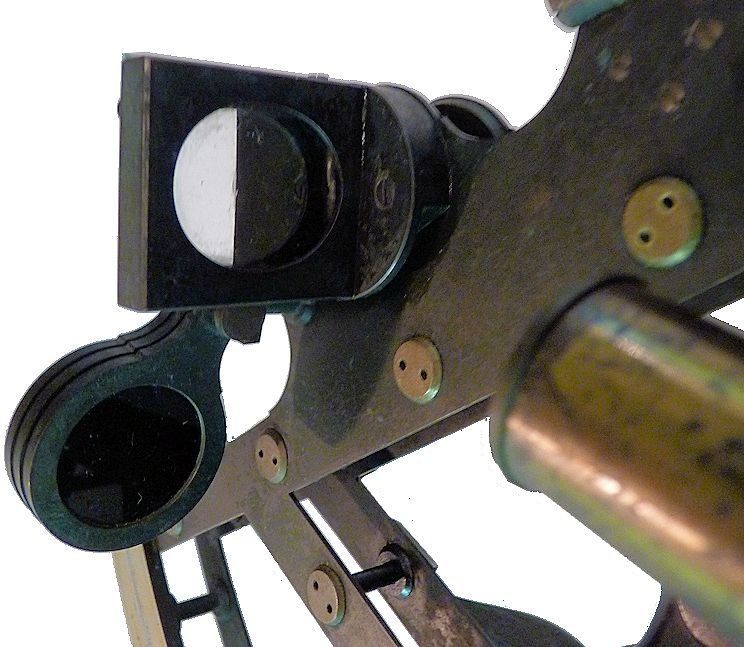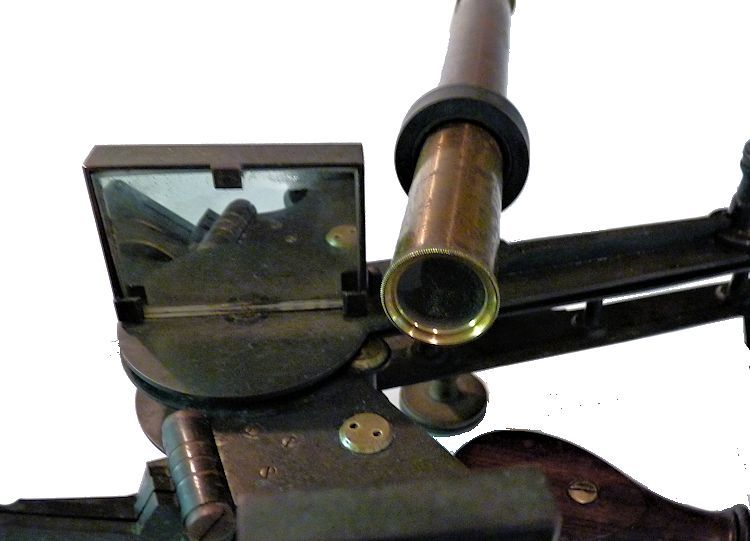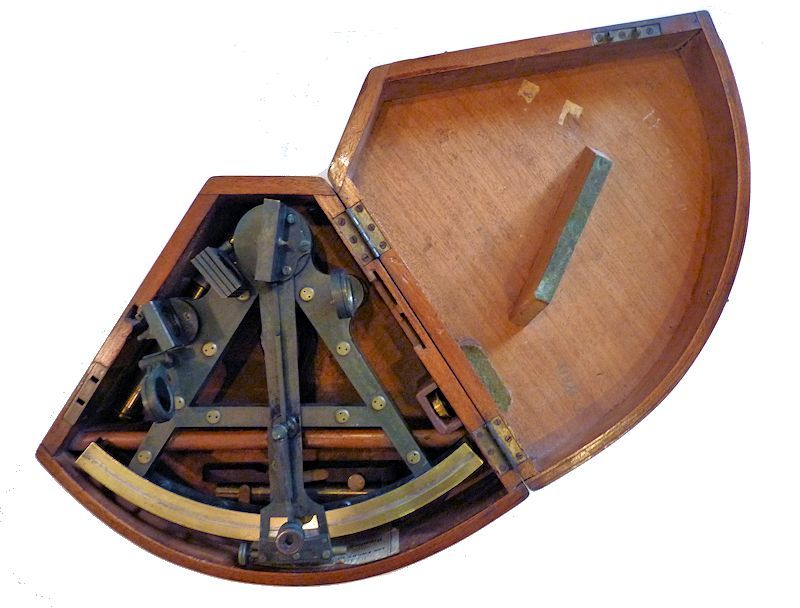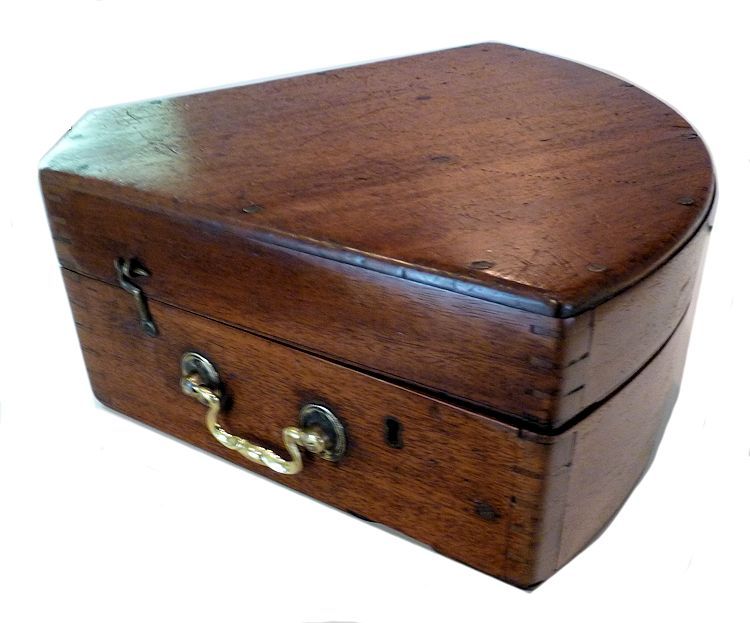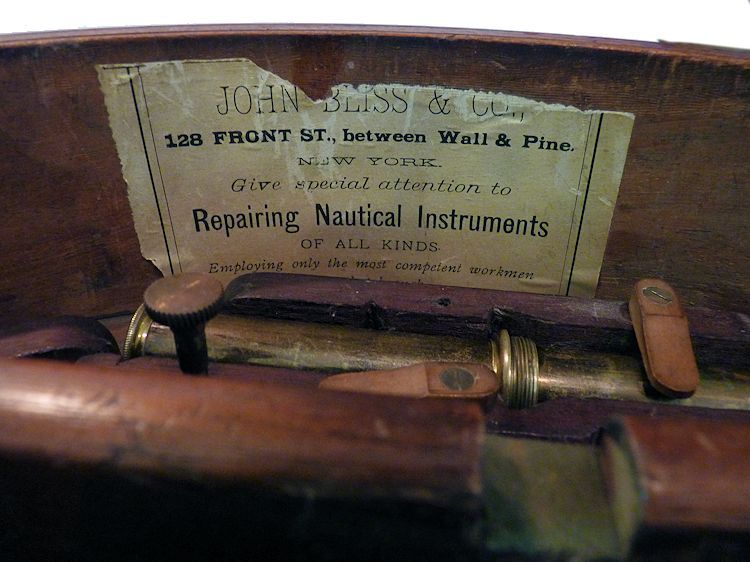TROUGHTON & SIMMS were the
best of the English instrument makers. This instrument dates from their partnership and belongs in a collection
of fine nautical antiques or as an important gift PRESENTED is a
large size double frame quintant or sextant that was made by Troughton & Simms – London, and carries serial
number 2964 on its center limb. The upper portion of the frame is in its original midnight black finish and the arc is
brass with a silver insert for the gradations. Edward Troughton patented this design in 1788 and this example is 1/2
inch smaller in height and width than a similar device made by this partnership with a 35xx serial number that we
sold in 2014. That was the fourth double frame instrument we discovered and was polished by us for presentation.
See https://landandseacollection.com/id1004.html
Polishing is available for this intrument as well for an addional fee.
The instrument’s arc is graduated into 150 degrees which classifies it as a
Quintant. Brass became the accepted the material of choice for sighting instruments in the later 19th Century
because of its strength and durability. Double frame sextants were expensive to make and never gained
the popularity of the more common single, cast-framed instruments. Consequently they infrequently come to market.
Double frame instruments very rare
and special so they can be considered a wonderful reminder of navigation instruments of the last quarter of the
19th Century.
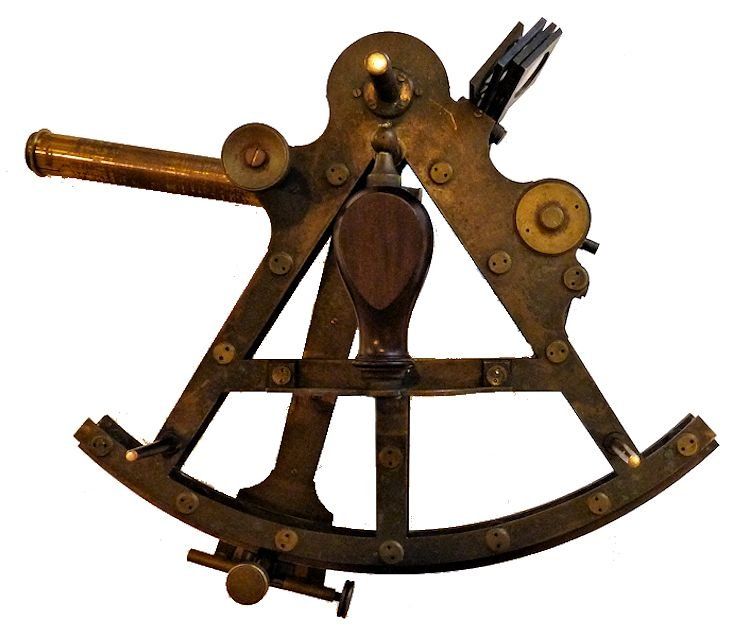
The sextant has two straight bar pillar frames that are held together with twenty one pillars,
and various screw fittings. There is a turned Rosewood handle. The tangent screw and clamping screw are positioned on the
back of the index arm. The device has four square index shades, and three round horizon shades. The telescope is attached
to a perpendicular rising-piece which is adjusted in and out by a milled knob. There is also a magnifier traveling over the
vernier. The single telescope presents an inverted image. The brass limb is inlaid with a sterling scale from
-5° to 150° divided each 5 degrees. The sterling vernier measures from right to left from
0 to 10 in arc seconds.
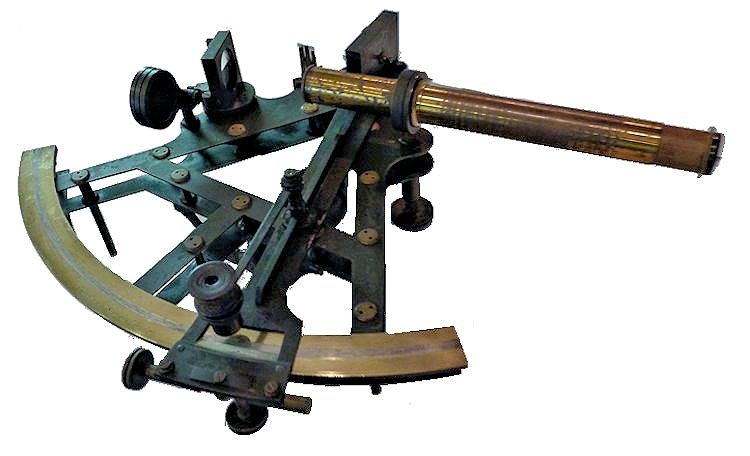
This is a one time opportunity to acquire an extremely
rare and very large example of a double frame, pillar, instrument from Troughton & Simms, without
a doubt, one of England’s most distinguished instrument makers!
|
INSTRUMENT & CASE CONDITION: The instrument has all of its original
factory applied black coating. The telescope displays the image upside down which was not unusual for astronomical use. Both
mirrors, considering their age, are in very good condition. The swing arm magnifier is complete
and in good working order, but does not slide up and down. Both sets of shades, i.e., filters are in perfect condition.
The endless tangent screw turns easily.
The telescope and sighting tube are polished brass with much of their original varnish present. The adjusting wrench for the mirrors is present.
The fan shaped case is in excellent condition and the varnish has pleasantly mellowed
with age. There is a pocket for two lens caps on the right side with the wood broken off and the caps missing. There also
is a wood slot for an additional sighting tube which is missing.
|
HISTORIC BACKGROUND
Edward
Troughton, FRS (October 1753 – 12 June 1835) was a British instrument maker who was notable for making telescopes
and other astronomical instruments. Troughton was born at Corney,
Cumberland. In 1779, after serving an apprenticeship with his elder brother John, he became his partner and soon established
himself as the top maker of navigational, surveying and astronomical instruments in Brittan.
In
1795 he delivered the Troughton Equatorial Telescope to the Armagh Observatory, a 2 inch aperture refractor telescope mounted
equatorially, and its first major instrument since its founding in 1790 (It survived into the 21st century also). He
created the Groombridge Transit Circle in 1806, which Stephen Groombridge used to compile his star cataloger.[3] He did not
merely build instruments, but designed and invented new ones such as his double frame instrument of 1788.
Troughton
was awarded the Copley Medal of the Royal Society in 1809. He was elected a Fellow of the Royal Society in March 1810. In 1826, after John’s death and in failing health himself, he took on
William Simms as a partner and the firm became known as Troughton & Simms. Troughton
was color blind. On his death in 1835, he was buried in Kensal Green Cemetery.
TROUGHTON & SIMMS, THE SUCCESSOR: Troughton
& Simms was a British instrument-making firm, formed when Edward Troughton in his old age took on William Simms as a partner
in 1826. It became a limited company in 1915, and in 1922, it
merged with T. Cooke & Sons to form Cooke, Troughton & Simms. The
firm produced hundreds of astronomical instruments such as mural circles, transit circles, sextants, and other astronomical
instruments for observatories around the world. Previously, Troughton
had been a sole proprietor, and before that he was in partnership with his brother John. John died and Edward took on Simms
in 1826. Edward Troughton died in 1835.
Ref. This maker is is listed in Sextants at Greenwich”, “Sextants
at Greenwich” by W.E.J. Mozer Bruyns, which catalogs the collection of the British National Maritime Museum at Greenwich,
England.
|
|
